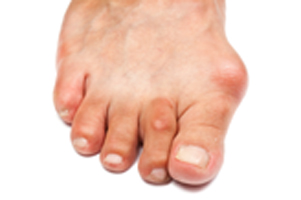Bunion Splints: How To Treat The Hard Lump On Your Toe

Working from home during the Pandemic? It’s actually a perfect time to have your Bunion Surgery with Houston Podiatrist Dr. Sherman Nagler
July 15, 2020
Pain on the Bottom of Your Foot? That can be Big problem
September 1, 2020If you have a hard bump that is growing off the side of one of your big toes, that is called a bunion. Bunions are caused by hereditary issues, long amounts of activity on a person’s feet, or ill-fitting shoes. When this happens, the metatarsophalangeal joint, or MTP joint, develops a growth that may be painful and uncomfortable. It also will cause other foot issues in the future, redirecting your big toe inwards and changing the appearance of your foot for the worse.
What Is A Bunion Splint?
Of all the many bunions treatment Houston available, one inexpensive treatment option is a bunion splint. A bunion splint is a device that wraps around your foot and uses a hard, plastic shell to separate your big toe from your adjacent toe. Bunion splints come in multiple designs, but all of which serve the same purpose of gradually correcting the affected toe. Bunion splints can be worn along with socks and custom-fit shoes or boots, so you can conceal the splint if you desire to. A splint can be prescribed to you following your surgery or purchased at an online retailer.
Purposes Of A Bunion Splint
Bunion splints are not considered treatment options by themselves, but they work alongside other treatment options that contribute towards realigning your big toe and reducing the bump on the side of your foot. They are highly recommended following bunion surgery in order to get the patient back to walking as quickly as possible. By wearing a bunion splint, here are some other benefits while recovering from a bunion:
Bones, Tendons, And Ligaments Stay Connected
Not only is a bunion splint supposed to realign your big toe back into place, but it will also ensure that other parts of your foot stay aligned as it happens. As feet tend to get a lot of motion and activity, they require enough protection and care to prevent something from getting dislocated, which a bunion splint can provide.
Healthy Tissue Returns To Your Joint
When a bunion forms on your foot, the healthy tissue breaks apart and is replaced with scar tissue. For your foot to heal properly, this involves healthy tissue returning to the area, which is only possible by breaking apart the scar tissue when wearing a bunion splint.
Range Of Motion Returns To Your Foot
Following surgery, a bunion splint will be able to keep the foot corrected as it heals, allowing tendons and ligaments to return to form faster. With a splint, you would be able to return movement and flexibility in your foot much quicker, and more freely compared to recovering without a splint.
While wearing a bunion splint, here are other tips to consider:
- Wear better-fitting shoes. In order to prevent another bunion from appearing, shop for shoes that offer a wide toe box. If you insist on keeping a pair of shoes with a narrow toe box, only wear them sparingly.
- Bunion splints are not ideal for treating swelling and inflammation. You can also take ibuprofen and apply ice packs to help reduce any swelling around your foot.
- There are some splints that you can wear at night. Ask your doctor if your prescribed splints are ideal for sleeping with, as they can also help in recovering from a bunion
Summary
Bunion splints are effective recovery treatments for bunions following surgery. They are designed to space the big toe from the toe next to it, so that the joint is corrected and the foot can heal properly. Splints are known to be affordable and can be worn with socks and specialty footwear.



